- Our Products
- Upper Extremity
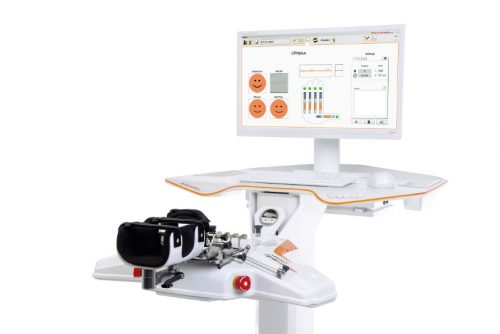 Amadeo Finger-Hand-Rehabilitation
Amadeo Finger-Hand-Rehabilitation
Amadeo is giving hands back their grip and fingers their finesse. Patients who are barely able or unable to grasp can perform hundreds of robot-assisted grasping movements. It won’t train a new Mozart. But it will help patients return to the piano, handwriting Christmas cards, and grabbing life firmly by the horns.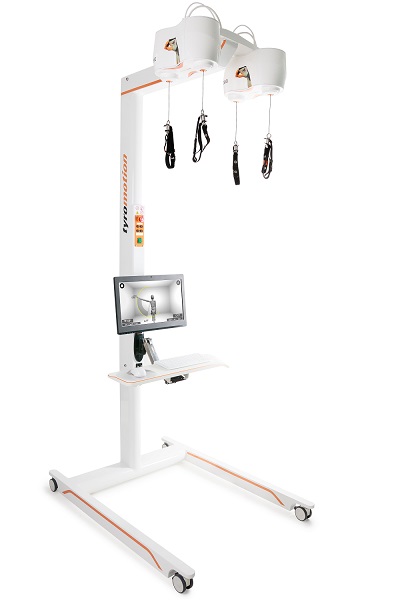 DiegoShoulder-Arm-Rehabiliation
DiegoShoulder-Arm-Rehabiliation
Diego is designed to strengthen what’s important. Whether proximal or distal training, Diego purposefully supports the rehabilitation of natural motion, allows the handling of everyday objects to be relearned, and is usable by adults and children alike.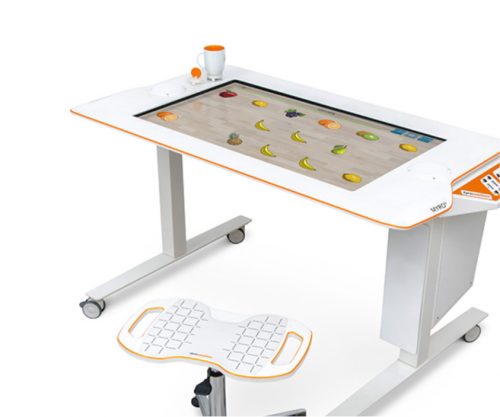 Myro Interactive and task-specific therapy
Myro Interactive and task-specific therapy
Myro is made for making humans get better! The sensor-based surface enables task-oriented rehabilitation with real objects, trains the patient’s cognitive abilities, and improves motor abilities of the upper extremity.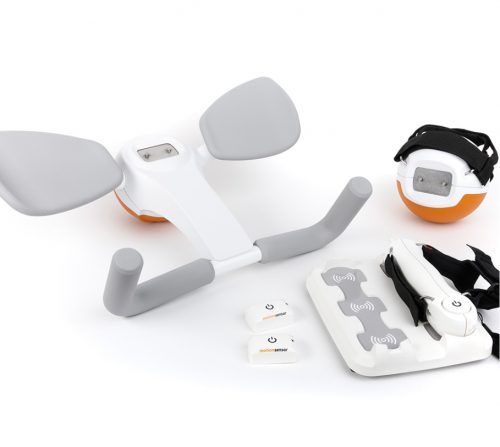 Pablo Upper Extremity Rehabilitation
Pablo Upper Extremity Rehabilitation
As a multifunctional rehabilitation device with comprehensive accessories, Pablo enhances classical therapy exercises with biofeedback, objective assessments, and gamification. It won´t train the next Picasso. But it will help patients to take back control of their lives.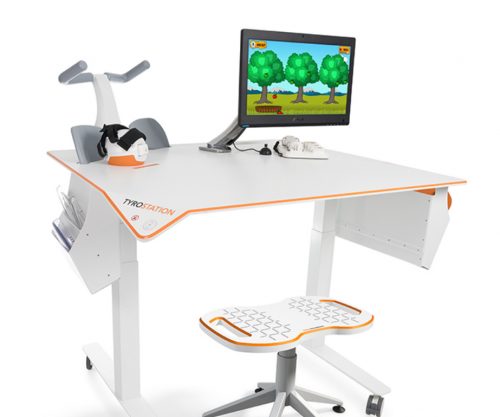 Tyrostation The perfect therapy setting
Tyrostation The perfect therapy setting
The Tyrostation is home to all components of Pablo and Tymo and provides ergonomic adaptability for patients. Sometimes, it´s about the little things in life – or therapy.
- Lower Extremity
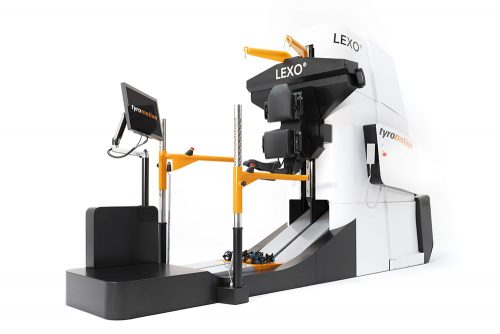 LexoGait and Locomotion
LexoGait and Locomotion
Lexo is a revolutionary gait trainer and impresses with fast setup, high patient activity and optimal trunk support. It encourages active participation and enables therapists to focus fully on their patients.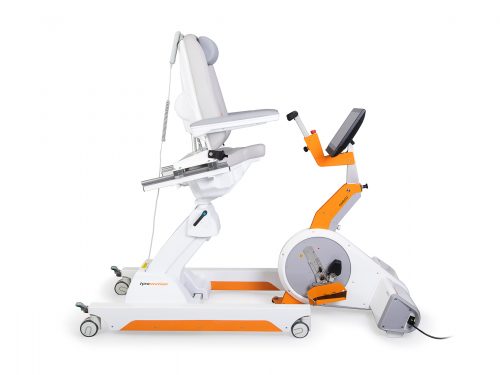 Omego Plus Gait training for the goals across all phases
Omego Plus Gait training for the goals across all phases
More than just a therapy bike! Omego Plus combines uni- and bilateral leg training, leg press, stepper, cycling & foot lift training in one device. Stride stronger with Omego Plus!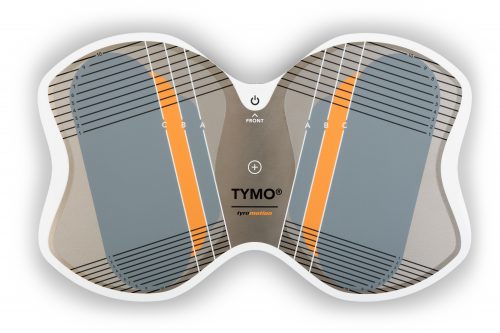 Tymo Balance training and postural control
Tymo Balance training and postural control
Small but powerful! Tymo is a versatile measurement and therapy system for the whole body. In addition to the standing position, Tymo offers a wide range of options for maximum variety during therapy.
- MTT-Line
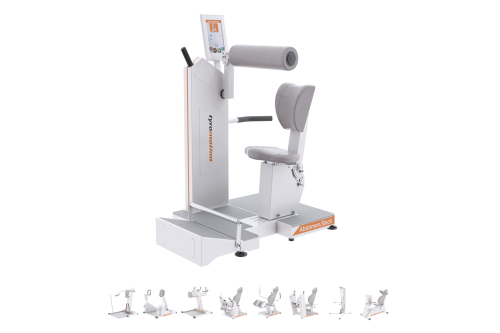 MTT-LineMedical training therapy
MTT-LineMedical training therapy
Get back in the game with the MTT-Line! The Medical Training Therapy devices are specifically designed to strengthen the six major muscle groups of the human body. Barrier free and maximum adjustability make the devices accessible for all types of patients.
- Software
 Maya Therapy Platform
Maya Therapy Platform
Maya reduces paperwork, standardizes documentation, and automates reporting, making administration effortless and efficient. Designed for therapists to work wonders!
- Upper Extremity
Rehabilitation
Infantile Cerebral Palsy (ICP) – Childhood under special conditions
4. October 2022 ● 5 min. Reading time
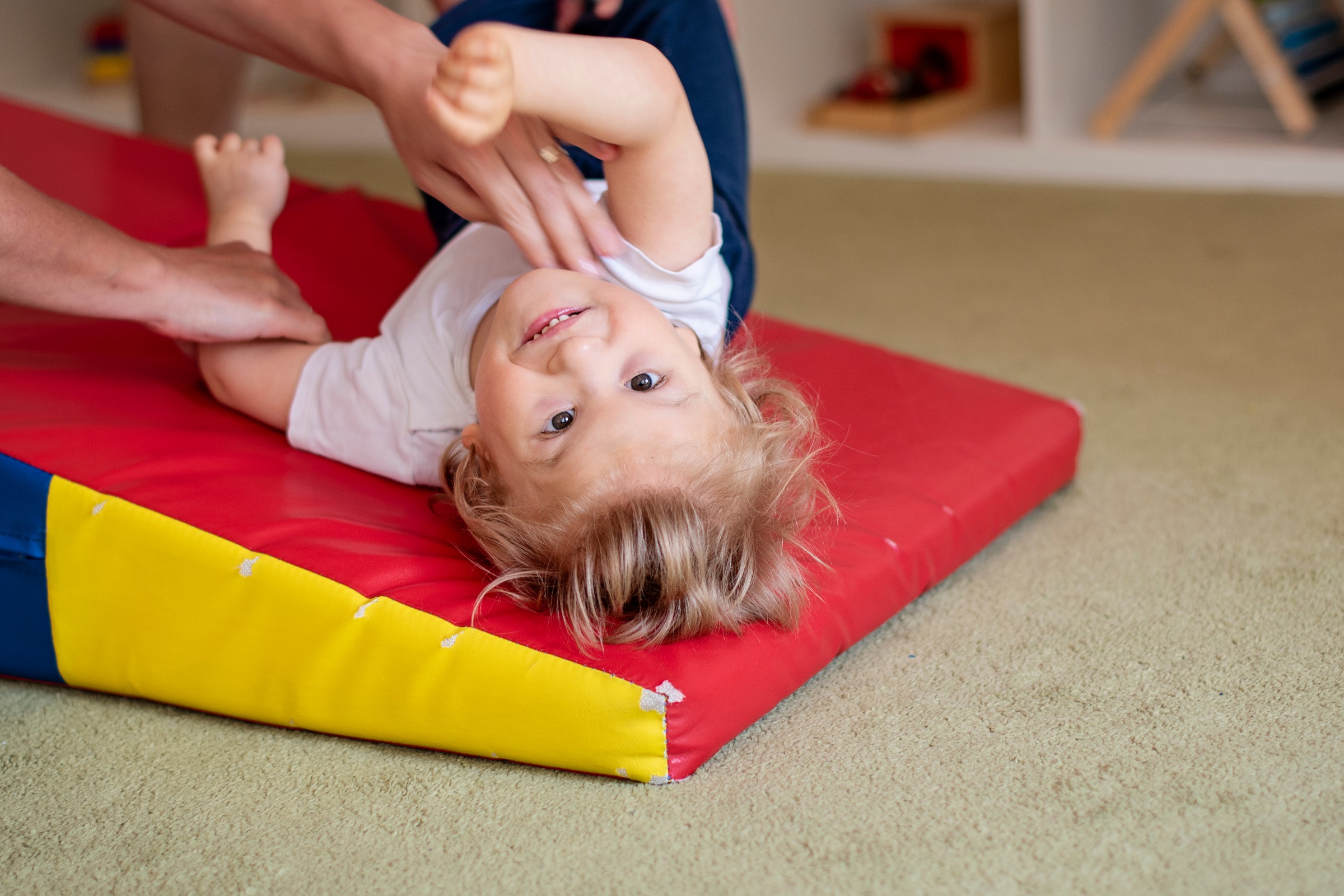
What causes ICP?
A variety of factors can cause cerebral palsy. Only in about half of all cases can an actual cause be established. About 20% of ICP cases have their origin in immediate peri- or postnatal events.
It is possible that an unborn child’s brain develops incorrectly or suffers damage during pregnancy or before birth (intrauterine, prenatal). An infection of the mother, damage to the unborn child caused by alcohol and/or drug use, various medications, thrombosis of the unborn child, carbon monoxide poisoning or insufficient oxygen supply can cause prenatal ICP.
The brain can also suffer damage during birth (peripartum). A birth is a strenuous process for both mother and child. Disruption of blood circulation or birth trauma may cause cerebral palsy.
Damage occurring after birth (postpartum) is usually caused by infection of the newborn, thrombosis, or enterotoxins (toxins produced by micro-organisms). Babies born prematurely are particularly at risk. Bacteria and toxins can cause “poisoning” in newborns’ immature intestines, which may spread to the brain via the bloodstream and cause damage.
If the damage to the brain occurs within the first two years of life, the condition is known as infantile cerebral palsy. The main causes include severe illness, such as meningitis (inflammation of brain membranes), sepsis (blood poisoning), or injuries such as traumatic brain injuries or severe dehydration (insufficient fluid intake).
How is ICP diagnosed?
ICP is often difficult to diagnose in newborns. Usually, delayed development is observed over time. These children acquire motor functions later than their peers or not at all.
They may exhibit reduced coordination, suffer from spasticity (muscle stiffness, cramps), have impaired vision or hearing, and/or demonstrate reduced ability to speak. Recurring epileptic episodes are also possible.
To determine the cause of such symptoms, an MRI (magnetic resonance imaging) of the brain is performed. If no clear diagnosis is possible, nerve and muscle function tests can be helpful. A careful look at the medical history can narrow down possible causes.
What are the symptoms of ICP?
Symptoms of ICP can range from mere clumsiness to severe physical disabilities. Not only may areas of the brain controlling motor function be affected, patients may also exhibit behavioral disorders, impaired vision/hearing, and/or reduced intellectual capacity. They may also suffer from epileptic seizures. If facial muscles are affected, the ability to speak may also be reduced.
Impairment of motor function caused by ICP is categorized into four main groups:
- Spasticity – stiffness and weakness of muscles
There are different forms of spasticity. It can predominantly affect one extremity (spastic monoparesis), one half of the body (spastic hemiplegia), both legs (spastic diplegia), or all extremities (spastic tetraplegia). Muscle tone in the torso is often reduced (hypotonic).
Spasticity affects about 80% of children with ICP, making it the most common ICP symptom.
- Dyskinesia – interruption of motion sequences
Children suffering from dyskinesia struggle to coordinate their movements. Involuntary, writhing (secondary) movements occur. These movements can be convoluted, abrupt or jerky. Emotions may exacerbate dyskinesia. These involuntary movements disappear when the child is asleep.
As facial muscles may also be affected, speech problems may occur.
- Ataxia – difficulties with coordination of movements
Ataxia is an impairment of muscle movement coordination caused by damage to the cerebellum. Muscles are often weaker, movements can be trembling (tremor), and rapid motion sequences and fine motor functions are difficult to execute. The patient’s gait is wobbly and insecure.
- Mixed-forms of ICP
Patients usually suffer from a mixed form of spastic and dyskinetic ICP. In mixed forms, additional limitations such as reduced intelligence or behavioral abnormalities are much more common.
With all forms of ICP, movements and muscle tone changes may cause secondary damage. Common are deformities of the feet and the legs, especially hip subluxation. Spinal scoliosis is also possible. One-sided load-bearing when sitting or lying can cause open areas of skin (decubitus ulcers) and reduced bone strength (osteoporosis).
How can ICP be treated?
ICP is a highly complex condition with many challenges for parents and children. Parents and children often have to complete “marathons” of medical and treatment appointments. There can also be considerable financial challenges as physical growth requires new adjustments to medical equipment and aids.
Close cooperation between different medical and therapeutic specialties is needed to allow children with ICP as much independence as possible.
The child’s development is assessed at regular intervals to optimize treatment and aids to the best possible degree. Physiotherapy and occupational therapy start early and are continued long-term. The main goals are to achieve maximum movement capabilities and independence for the child. As the child gets older, preventing secondary damage plays an important role, too.
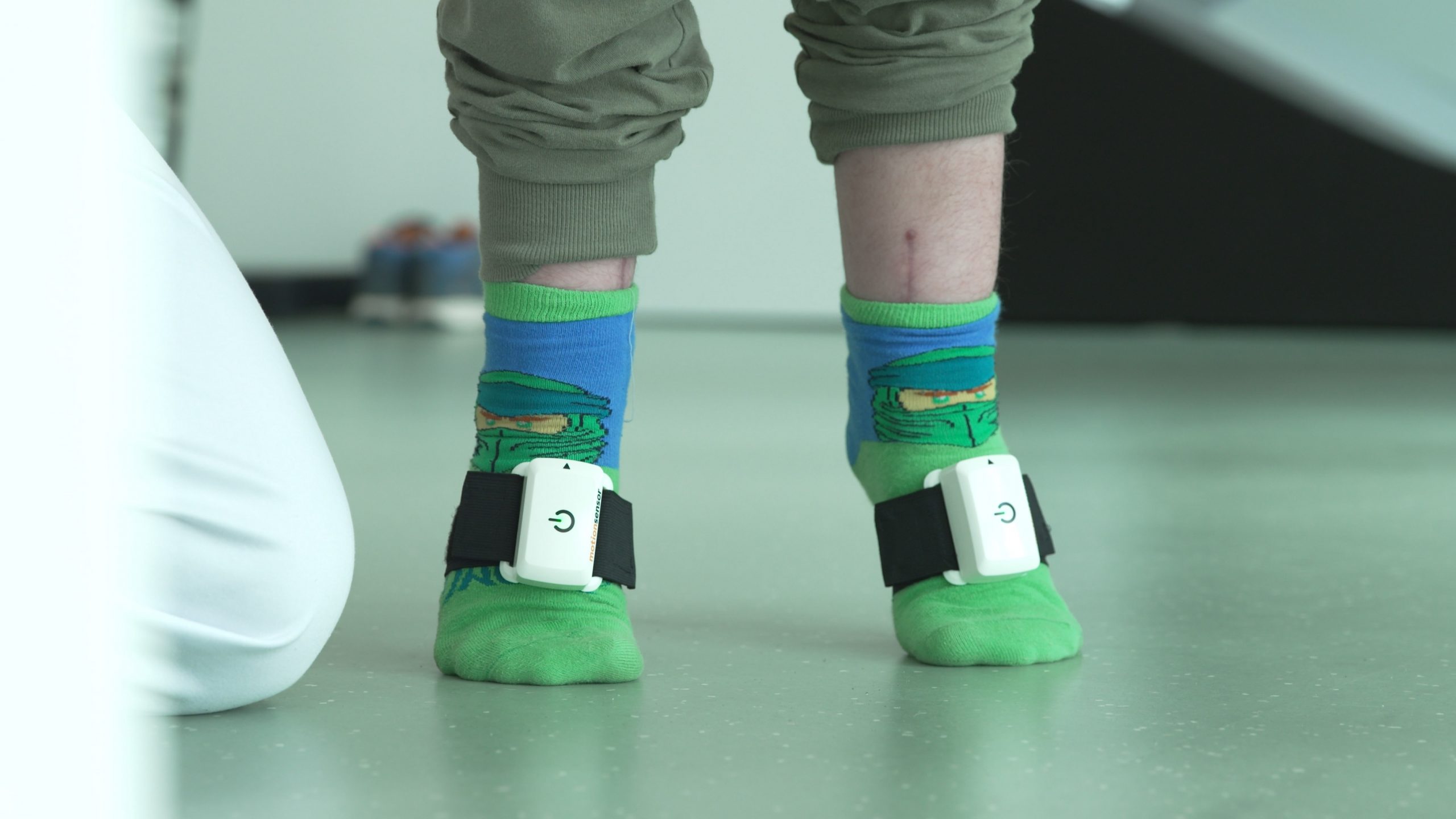
In addition to occupational and physiotherapy, technology-based therapy, speech therapy, psychological support and hippotherapy (therapy centred around horses) can be beneficial.
When physical limitations are more extensive, it may be necessary to inject spasticity-reducing medication, or botolinum toxin A, to regain the ability to move.
When conservative therapy options are exhausted and no further progress can be expected, surgical corrections may be an alternative. This is necessary in the case of contractures or deformities that make it impossible for the child to sit or to be cared for.
What is the prognosis for ICP?
There is no complete cure for ICP. The prognosis very much depends on the severity of the damage. If the limitations are minor to moderate, life expectancy is almost identical to the norm.
As parents, you can help your child achieve their full potential. It is important to experience as much “normal” daily life as possible. Every activity promotes the individual resources of the child and allows for a childhood beyond the condition.
Author: Saskia Wibner
You might also be interested in
4. April 2023
Health
Rehabilitation
Stroke nutrition guidelines for optimal health
Nutrition as the key part in health and well-being of stroke survivors A healthy, balanced …
21. March 2023
Rehabilitation
Kinesio taping in neurology as a useful therapy supplement
The Kinesio tape and its usefulness in neurological therapy What was originally known only from …
7. March 2023
Rehabilitation
Exercises against freezing of gait in Parkinson’s disease
When the legs freeze – how does the symptom “Freezing of Gait” manifest itself? Parkinson’s …



 Contact
Contact 

 Contact
Contact 

